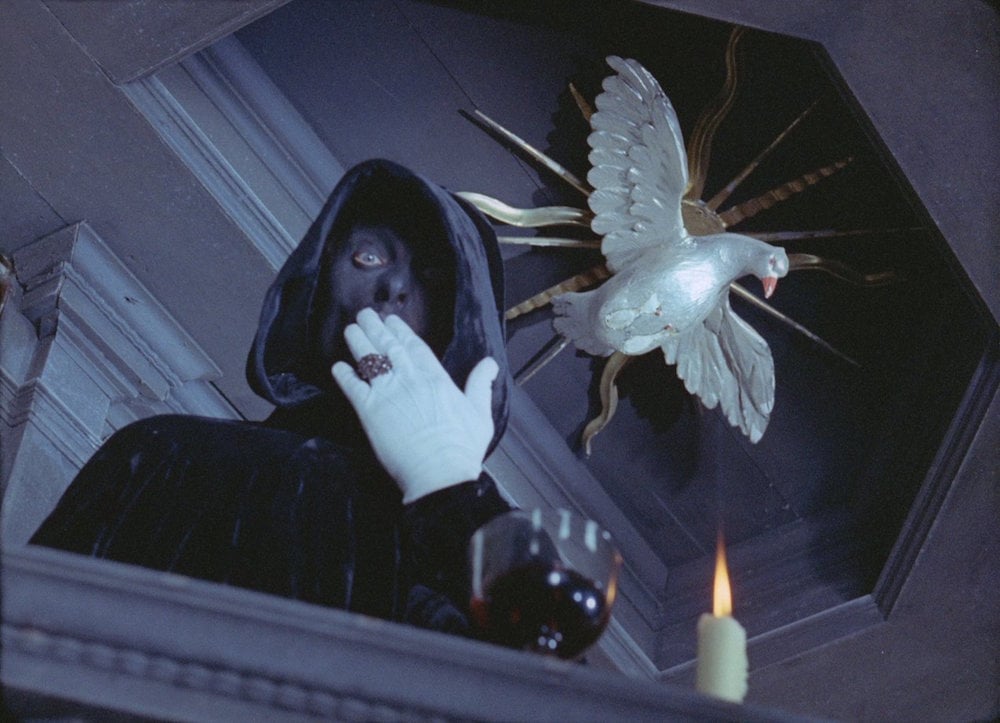Fright night: 8 horror films from the New East to watch this Halloween

From an erotic thriller involving rats to a baby tree stump out to eat its parents, horror films from the New East may be creepier than your usual bloody Hollywood franchise — all the more reason to watch them
With Hollywood releasing an even scarier film every October, from true stories to found footage flicks, perhaps the only frightening thing about Western horror is that we’re becoming immune to it. It’s quite possible you’ve watched all ten sequels of Friday the 13th and think that nothing can scare you anymore. But have no fear, these spooks from the New East will be sure to send chills down your spine.
Viy
1967
Based on a short story by Nikolai Gogol, the film is often praised as being the USSR’s only horror movie. And while this is only true if you look at Soviet films before perestroika (most Soviet thrillers were filmed later, in the 1980s) Viy remains the symbol of Soviet horror. Haunted with monsters, skeletons and witches, the film’s creepiest scenes take place in a church where a young seminary student stands vigil and prays for a rich cossack’s daughter who happens to be a witch. The film was remade in 2014 but the original adaptation is still recognised as universally blood-chilling, even though the monsters look pretty silly 50 years later.
The Rat Saviour
1976
Directed by Croatian director Krsto Papić The Rat Saviour is a surreal take on a novel by Russian writer Alexander Green, which itself borrows from the legend of Pied Piper. The film is set in Yugolslavia-era Zagreb and riddled with paranoid, dream-like sequences interlaced with erotica and lots of rats. As the main character is trying to tell reality from fantasy, a rat conspiracy sect is taking over the town… Or is it?
Mister Designer
1988
A designer played by the otherworldly actor Viktor Avilov makes a mannequin for a shop, modelling it after a young woman who is dying of tuberculosis. She disappears suddenly and he is unable to pay her for her modelling. Several years on he meets a woman who is an exact copy of the mannequin, and his life turns into a foggy if also visually fascinating nightmare. Set in pre-revolution St Petersburg, the film, scored by composer Sergey Kurekhin, is a symbolic and menacing tale about the relationship between a creator and his creation — so much so that it has earned a reputation as USSR’s first mystical thriller.
Dead Mountaineer’s Hotel
1979
Made by TallinnFilm and based on an eponymous novel by Russian sci-fi writers Boris and Arkady Strugatsky, the film takes place place in a small resort in a remote spot in the Alps, where a detective arrives for a holiday. Naturally, he gets little time to relax before he has to investigate a murder. At some point the hotel’s eccentric residents stop being amusing and become downright suspicious. But are they just killers, or is there more to the story?
Leptirica
1973
Leptirica, translated from Serbian as “she-butterfly”, is considered to be the first Serbian horror film. It is based on a vampire story by Serbian writer Milovan Glisić, which was actually published 17 years before Bram Stoker’s Dracula. The film’s straighforward but eerie approach to depicting ghouls might just convince you this is exactly what monsters would be like in real life rather than the perfect, polished CGI images we see now.
Valerie and Her Week of Wonders
1970
This film is based on a 1945 Czech novel of the same name, and is lauded as a masterpiece of phantasmagoric sexual horror. Barely held together by a narrative, the film is like a series of hallucinatory dreams pieced together by several sinister characters: vampires, monsters, priests, and people whose role keeps on changing throughout the movie. The film wasn’t released in many countries because of its subject matter (early female sexuality mixed with dark horror themes) but boasts a cult-like status among Western horror-film enthusiasts and Czech New Wave aficionados, who defend it as a classic coming-of-age film.
Gongofer
1992
Directed by Bakhit Kilibayev, one of the writers of Viktor Tsoi’s film The Needle, Gongofer is a mystical surrealist road movie, trapped between early Nineties Moscow and a small unnamed village. Its main protagonist is seduced by a mysterious woman in a limo, who replaces his eyes with a pair in a different colour. Moscow as represented by the film is populated by ghouls, demons and witches, and some see the characters’ wanderings through it as a symbolic reflection of post-Soviet life.
Little Otik
2000
This surrealist film by Jan Švankmajer is considered a comedy by some and a horror by others. The film is set in a Czech apartment, where a young childless couple decides to adopt a tree stump. They treat it as a child and the stump comes to life and after a while comes to resemble more of a monster than a baby. As it grows more and more powerful, the questions of the tree stump baby’s fate become critical for the family and their neighbours — but what would you do if your baby wanted to eat you?